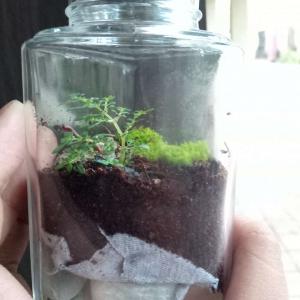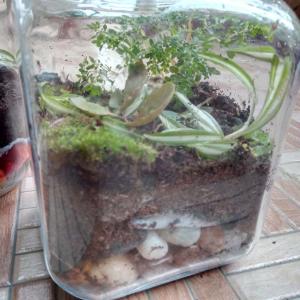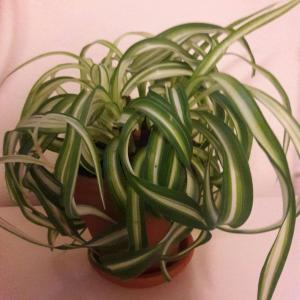文章
Dummer. ゛☀
2017年09月13日

HESE small, soft-bodied, pear-shaped insects cluster densely on tender new growth and the undersides of leaves to suck plant juices. Plants often can withstand some aphid feeding with no adverse effect, but badly infested plants develop distorted growth and leaves may turn yellow or drop off.

Sometimes it takes close inspection to discover an aphid infestation. They blend in so well with foliage that you may not spot them at first glance, even though hundreds are present. Many species of aphids feed on home garden plants; these insects range in color from pale green, pink, or black to red or yellow. Size is typically 1/16″–1/4″. Adult aphids are generally wingless, but winged adults will appear when overcrowded. Immature aphids (nymphs) closely resemble adults.

Both adults and nymphs feed on a wide variety of plants, including most edibles and ornamentals. In small numbers aphids do little damage, but they are able to reproduce rapidly and can quickly become a more serious problem. Also, as they feed, aphids secrete a sweet fluid called honeydew that can attract ants; sooty black fungus may grow on coated leaves. Aphids are common throughout the U.S.

Prevention and control
When fertilizing your garden, avoid applying too much nitrogen, which can stimulate plants to grow too rapidly and produce a flush of exactly the kind of tender new growth that aphids love.
Attract and release beneficial insects, such as ladybugs and lacewings, which will be happy to devour a bountiful supply of aphids.
Use a spray with neem oil, which is derived from the seed of the neem tree. It controls a wide variety of common garden insect pests such as aphids as well as fungal diseases.
Use a strong spray of water from your hose to dislodge aphids from affected plants. This will reduce their numbers dramatically. Recheck the plants a few days later and repeat the treatment if needed. (Keep in mind that water sprays will also kill beneficial insects.)

Sometimes it takes close inspection to discover an aphid infestation. They blend in so well with foliage that you may not spot them at first glance, even though hundreds are present. Many species of aphids feed on home garden plants; these insects range in color from pale green, pink, or black to red or yellow. Size is typically 1/16″–1/4″. Adult aphids are generally wingless, but winged adults will appear when overcrowded. Immature aphids (nymphs) closely resemble adults.

Both adults and nymphs feed on a wide variety of plants, including most edibles and ornamentals. In small numbers aphids do little damage, but they are able to reproduce rapidly and can quickly become a more serious problem. Also, as they feed, aphids secrete a sweet fluid called honeydew that can attract ants; sooty black fungus may grow on coated leaves. Aphids are common throughout the U.S.

Prevention and control
When fertilizing your garden, avoid applying too much nitrogen, which can stimulate plants to grow too rapidly and produce a flush of exactly the kind of tender new growth that aphids love.
Attract and release beneficial insects, such as ladybugs and lacewings, which will be happy to devour a bountiful supply of aphids.
Use a spray with neem oil, which is derived from the seed of the neem tree. It controls a wide variety of common garden insect pests such as aphids as well as fungal diseases.
Use a strong spray of water from your hose to dislodge aphids from affected plants. This will reduce their numbers dramatically. Recheck the plants a few days later and repeat the treatment if needed. (Keep in mind that water sprays will also kill beneficial insects.)
0
0
文章
Dummer. ゛☀
2017年09月13日

A powdery white growth on leaves is the first evidence of this fungal disease, which affects beans, cucumbers, squash, pumpkins, lettuce, peas and many other kinds of plants. The fungus can spread to flowers and fruit. New growth and succulent plant tissues are particularly vulnerable to infection. Infected areas eventually turn yellow and dry up; severe infection can weaken or even kill entire plants.

Unlike other fungal diseases, powdery mildew does not require wet foliage for infection to occur, although it does require high humidity. It can spread quickly in warm, dry climates. The fungus overwinters on plant debris.

Prevention and Control
Plant powdery mildew-resistant varieties, such as Super Sugar Snap pea.
Water plants as needed to prevent moisture stress.
Keep plants well spaced and weeded to optimize air flow around the leaves.
Avoid excess nitrogen fertilizer, especially late in the growing season.
Unlike other fungal diseases, powdery mildew does not require wet foliage for infection to occur, although it does require high humidity. It can spread quickly in warm, dry climates. The fungus overwinters on plant debris.

Prevention and Control
Plant powdery mildew-resistant varieties, such as Super Sugar Snap pea.
Water plants as needed to prevent moisture stress.
Keep plants well spaced and weeded to optimize air flow around the leaves.
Avoid excess nitrogen fertilizer, especially late in the growing season.
0
0























